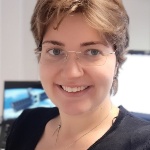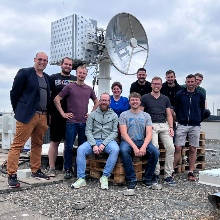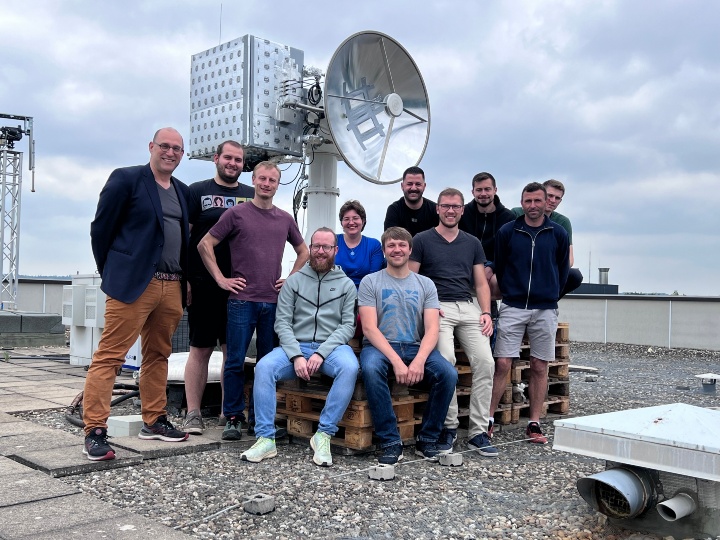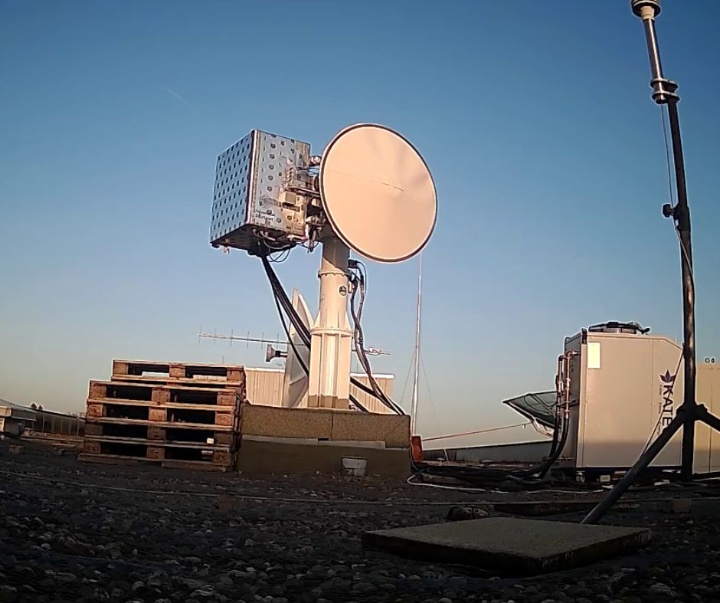The demand for broadband communication has been consistently strong for years and continues to grow steadily. The aggregated data rates in wireless and wired networks are increasing exponentially. The potential applications range from enabling people to work from home, to enabling telemedicine, which aids medical staff and first responders in coordinating emergencies effectively and promptly. The expansion of terrestrial networks to include the three-dimensional, vertical component of satellite communication envisaged in the sixth generation of mobile communications (6G) means that broadband internet can be accessed anywhere and at any time around the globe for the first time. These advancements are made possible by the deployment of global satellite constellations within a cost-efficient New Space framework.
The EIVE project opens up new frequency ranges for satellite communication
As part of the EIVE nanosatellite mission (Exploratory In-Orbit Verification of an E/W-band Downlink) funded by the DLR's German Space Agency and the BMWK and coordinated by the University of Stuttgart, research is being conducted into the development of new frequency ranges for broadband satellite communication. This effort aims to address the continuously growing demand for higher data rates. The unique aspect of this project is to demonstrate or establish a groundbreaking gigabit communication link with unprecedented data rates between space and Earth on a global scale.
Researchers at the University of Stuttgart’s Institute for Robust Power Semiconductor Systems (ILH) have achieved a significant milestone by commissioning a specially designed and developed ground station capable of receiving broadband communication signals in the W-band. The ground station is installed on Campus Vaihingen on the roof of Pfaffenwaldring 31, where the S-band ground station operated by the Institute of Space Systems (IRS) is also located.
The fully functional W-band ground station introduces several innovations in the field of satellite communications: It combines a 1.2-meter parabolic antenna with extremely high directivity and precise antenna tracking with the world's lowest-noise radio receiver and a new type of digitalization with mass storage, which allows the storage of broadband, digital communication signals with a data rate of over 10 gigabits per second in the radio frequency range from 71 to 76 gigahertz. This achievement enables the recording of data throughout the entire overflight of a satellite in low Earth orbit.
The receiver also includes real-time synchronization of digitally modulated user data, allowing for the streaming of uncompressed videos in 4K resolution, among other capabilities. To achieve maximum precision with the directional antenna lobe, the antenna tracking system utilizes multi-mode tracking and an automated search algorithm powered by artificial intelligence, marking the first implementation of such technology in this frequency range.
The ground station incorporates state-of-the-art and world-leading technologies from project partners Radiometer Physics GmbH (RPG) and the Fraunhofer Institute for Applied Solid State Physics (IAF). The antenna was developed and manufactured by RPG. Fraunhofer IAF has manufactured the high-performance integrated circuits based on its innovative III/V semiconductor technologies and developed state-of-the-art amplifiers that enable the broadband data connection.
The entire floor terminal is temperature-controlled so that the components and signal transmission are not affected by changing weather conditions. The IRS at the University of Stuttgart was responsible for the design, construction and integration of the satellite bus in the EIVE project. In addition, the IRS manages the satellite's operations with the help of the S-band ground station and external ground stations.
Bringing us one step closer to a globally interconnected planet
The scientific endeavors associated with the EIVE project and the development of the innovative W-band ground station for broadband Internet from space mark a significant milestone in advancing global communication networks. By combining advanced technological solutions with interdisciplinary research and cooperation, these activities make an important contribution to realizing the vision of a seamlessly networked planet where information can flow freely and quickly across geographical and digital borders.
Interested parties can also find out more about these and other modern developments in satellite communication in the showroom of the German Center for Satellite Communication (DeSK) in Backnang. Among other exhibits, a 1:1 model of the EIVE satellite is on display, with interactive explanations of its various functions and components.
For more information, please visit the website of the ILH and the website of DeSK.

Ingmar Kallfass
Prof. Dr.-Ing.Institute Director

Laura Manoliu
M.Sc.Research Assistant




